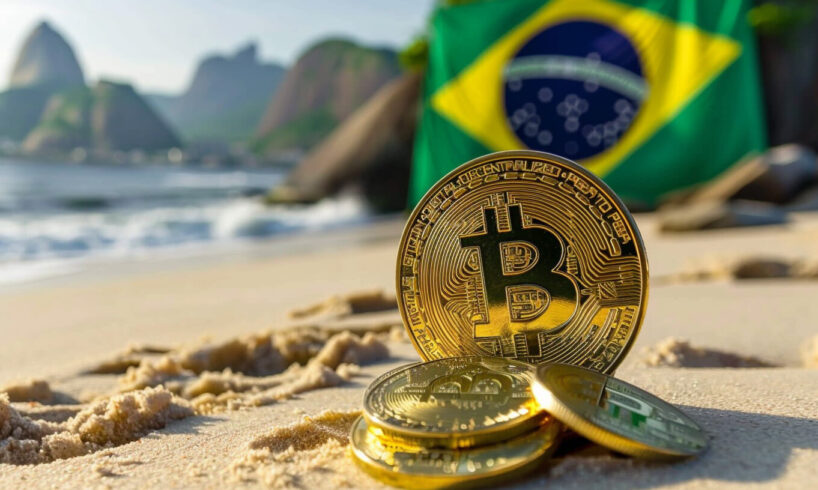
Discover the cities of Jericoacoara, Rolante, and São Thomé das Letras, three tourist cities using Bitcoin as everyday money. Understand how the Lighting Network plays a crucial role in promoting the use of Bitcoin as a payment method.
Store of Value or Medium of Exchange?
Bitcoin (BTC), the leading crypto on the market, is establishing itself as a reliable, liquid, and international store of value. With a market value of more than US$1 trillion, bitcoin is already larger than several currencies issued by national governments. Notably, Bitcoin is already larger than the Russian ruble and Swiss franc.
After years of technical discussions, Bitcoin’s base layer is establishing itself as a network for large-value settlement. At the same time, transactions requiring low fees and high speed are being carried out on second-layer, centralized, or decentralized solutions.
In particular, the Lightning Network (LN), a solution proposed to improve Bitcoin’s scalability, is probably the most used tool for settling small bitcoin payments or making everyday purchases.
At least in Brazil, LN is establishing itself as a popular option for making everyday payments in three tourist cities: Jericoacoara, São Thomé das Letras, and Rolante.
Notably, these cities are in the North, Center, and South of Brazil. In all three cities, Bitcoin use was driven by local non-profit projects.
Learn a little more about these three success stories from the Bitcoin world.
This article was originally published on the Brazilian blog Coinext, and focused on bringing educational content about Bitcoin and the digital assets market.
São Thomé das Letras
São Thomé das Letras is undoubtedly one of the most mystical places in Brazil. The city, which has just 8 thousand inhabitants, is one of the main tourist cities in Minas Gerais, the state of which it is part.
São Thomé das Letras is located high on a set of mountains, which provides stunning views from anywhere in the city. Furthermore, the city is surrounded by waterfalls and rivers that are easily accessible. Another highlight is the countless legends and mysticism linked to the region, which involve gnomes, aliens, elves, and other mythological beings.
And it was amidst this scenario that the Mountain Bitcoin project emerged. The project, started by a local bitcoiner, aimed to spread knowledge about the leading crypto to the city’s residents, mainly merchants and students.
The result was impressive. Dozens of local businesses display stickers saying, “We accept Bitcoin.” Payments are made through LN through Satoshi and Blink Wallet.
Victor Souza, resident of São Thomé das Letras, stated that the project has aroused particular interest among children in Bitcoin:
“The children received some satoshis in their wallets, which they can then spend on fruit at the largest local supermarket, which has agreed to participate in the project. The children were extremely happy and interested in learning more about Bitcoin. Bitcoin is in fact a generational technology, which tends to arouse the interest of younger people. In the end, it is something inevitable, a natural evolution of money.”
Furthermore, Victor noted that payments in Bitcoin are still uncommon compared to traditional methods, despite many businesses accepting the digital asset:
“Cash payments are still more common, and this is natural. People don’t want to spend bitcoin. They prefer to get rid of weak government money. But just the possibility of making purchases in bitcoin is already a great evolution for the use of digital money.”
Jericoacoara
The city of Jericoacoara, located in northeastern Brazil, became known as Praia do Bitcoin. Inspired by El Zonte, located in El Salvador, Jeriquaquara pioneered using Bitcoin as currency.
The project was driven by bitcoiner Fernando Motolese, who promoted educational activities with local students and merchants.
“The school librarian told me that the computers in the IT room had been turned off for 2 years. I am a computer technician. So I told the director to let him raise funds to fix the school’s computers.”
Motolese elaborated:
“We started getting closer. I posted online that I needed resources to fix the computers. This opened up the possibility of us getting closer. So, the folks at Bitcoin Beach donated 0.1 bitcoin to us. With this donation of 0.1 bitcoin from Bitcoin Beach, we carried out this activation, which consisted of producing 408 paper wallets.”
Integration with LN was fundamental for adopting Bitcoin in the region, which now has several businesses that accept the leading digital asset.
Rolante
Rolante, located in southern Brazil, has just 21,000 inhabitants. However, more than 200 businesses accept the leading crypto in the region, a very significant number.
The adoption of Bitcoin in the region was driven by the couple Ricardo and Camila, who founded the Bitcoin É Aqui project. In addition to boosting the use of Bitcoin in commerce, they also held the event Bitcoin Spring Festival, which brought together Bitcoiners from all over the country.
Notably, the couple stated although the adoption of Bitcoin is helping to boost tourism in the city:
“The Project “Bitcoin Is Here!” comes at a time when local traders were hungry for something to boost tourism in the region. And at the same time, when I was already restless and needed to pass on the benefits of Bitcoin beyond myself.”
Victor Souza, head of SEO at Criptonizando, highlighted that the vast majority of merchants that accept Bitcoin in the city use the Lighting Network to settle payments, which are then consolidated in the base layer:
“With the establishment of Bitcoin as a settlement layer for large amounts, LN gains prominence as the main open protocol for these payments. Due to the still somewhat complex UX, many merchants opt for custodial wallets, which can then be sent to a proprietary address.”
Brazil and other countries in Latin America are establishing themselves as early adopters of Bitcoin. The region has several countries with weak and inflationary currencies, which incentivizes the adoption of the leading digital assets. Initiatives such as Praia Bitcoin, Montanha Bitcoin, and Bitcoin É Aqui are advanced in adopting Bitcoin as current money, which could take decades to occur globally.















